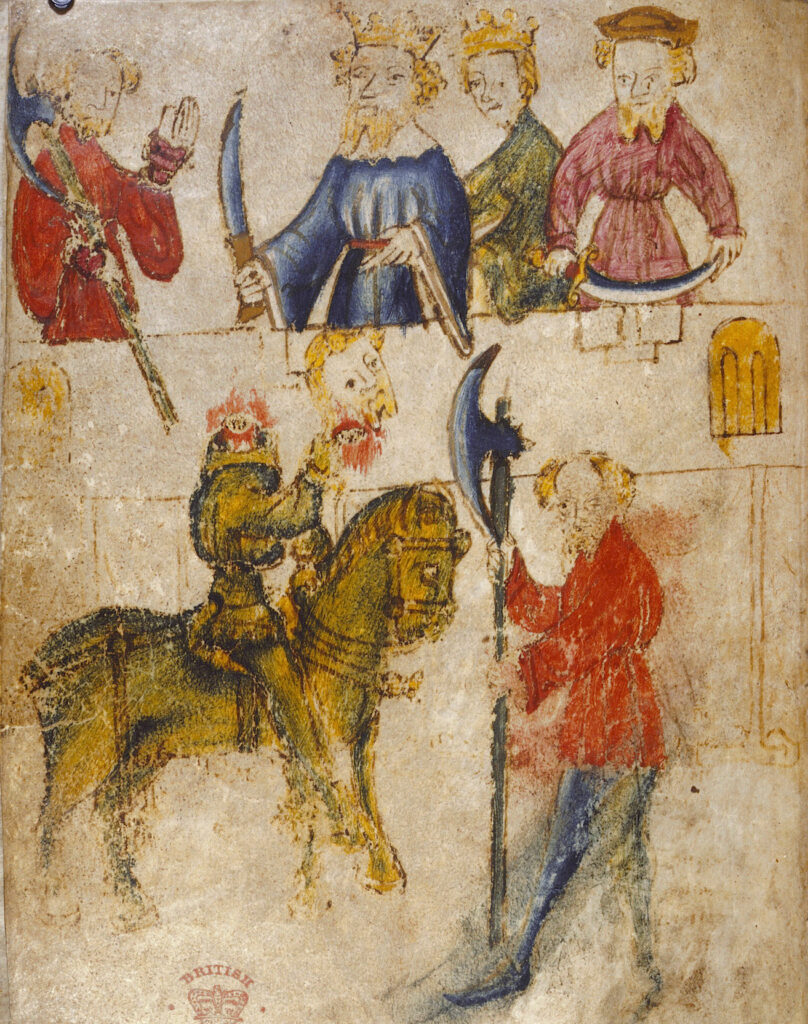Verrassingen
Beheaded, yet alive and kicking!

Marvels or events that defeat the most elementary laws of nature form a common ingredient of Arthurian romance. So much so that on great occasions King Arthur adopted the custom of demanding either the occurrence or the narration of such an event, as in Sir Gawain and the Green Knight. In this late-14th century Middle English romance Arthur and the knights of the Round Table are gathered at Camelot, celebrating Christmas with a sumptuous meal, when a green knight makes an entrance into the dining hall. Green is the colour not only of the armour and equipment, but of the knight himself and his horse. The Green Knight’s appearance startles the very members of Arthur’s court, even if they are supposed to be familiar with this kind of uncanny sights. But to lighten the atmosphere, the Green Knight proposes a Christmas game, though a gruesome one: one of Arthur’s knights must use a massive axe to strike the Green Knight, who will deal him a blow back in a year’s time.
Hoping to deliver a deadly blow, Gawain volunteers to take up the challenge and succeeds in cutting the Green Knight’s head off, but fails to kill him. The Green Knight picks up his head and leaves after reminding Gawain of his promise to meet the following Christmas. With no intention of avoiding his commitment, Gawain sets out from Camelot on November 2nd –All Souls’ Day– as a convict about to receive the death penalty. I am fascinated by the hero’s inner conflict as he struggles to reconcile his mortality with his high moral demands. The latter make him show up at the Green Chapel, whereas his human instinct makes him flinch when the Green Knight brings the axe down on his neck. Gawain’s natural reaction invites us to relate to him, while his sense of righteousness moves us to admire his exemplary behaviour.
Jordi Sánchez-Martí
Further reading
Edwards, A. S. G. “The Manuscript: British Library MS Cotton Nero A.x,” in D. Brewer and J. Gibson, eds. A Companion to the Gawain-Poet. Cambridge: D. S. Brewer, 1997. Pp. 197–219.
Image
The image is from a late-14th century manuscript containing the Middle English verse romance Sir Gawain and the Green Knight: London, British Library MS Cotton Nero A.x, fol. 94v.

